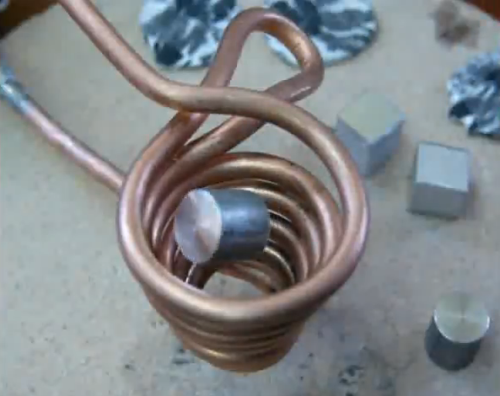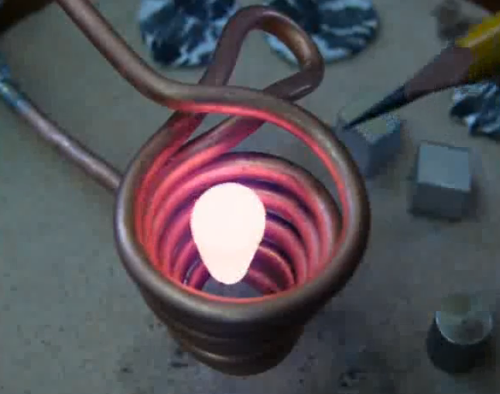It takes a lot to melt metal — you generally need some sort of heavy-duty torch and a whole lot of time to spare. But if you’re familiar with the application of electrical energy and have a basic comprehension of science, you can actually melt metal rather quickly using a bit of electricity and some wire.

Metal can be melted using simple, at-home items.
The set-up is remarkably simple and quite safe too. The way it works is you twist wire into a coil and run an alternating current through it. Doing this is the basic way in which electromagnets are created. With the electricity going, a magnetic field is created in the middle of the coil. If you place some metal in this area, like, say, aluminum, it will not only be suspended in the air, the atoms within the object will generate small currents of their own which, in turn, create tiny magnetic fields too. This helps pass electric current through the field itself as well.

Placing metal within a magnetic field helps generate current within the field itself.
Now, if the object is diamagnetic, then the tiny magnetic fields will be opposite to the ones in the coil, and generate a force that repels. As the small currents being generated in the metal encounter resistance, the metal heats up; the more resistance they encounter, the more heat gets generated. Eventually, the amount of heat being generated is more than the metal can bear, and it begins to melt.
Impressive, yes, but what’s really fascinating to see is the metal will actually melt mid-air.

The current created by the metal within the magnetic field encounters resistance when met by the current created by the coil; as the resistance becomes greater, more heat is generated within the metal.
You see, the strength of the magnetic field holds the liquefied metal together so long as power remains on. The moment the electricity is cut off, though, the metal drops out of the field and lands as a melted pile of liquid below.
The following is a full video demonstration of the technique. It should be noted that the user in this clip used a power inverter to alternate the current at 204,000 times per second, a significantly higher frequency then anything you might get at home (typical house current alternates 60 times per second). Unfortunately, there is no indication as to how much current and voltage is being used in the video. The piece of metal used is aluminum weighing 2.6 grams.
Enjoy:
Story via geek.com
Advertisement
Learn more about Electronic Products Magazine





